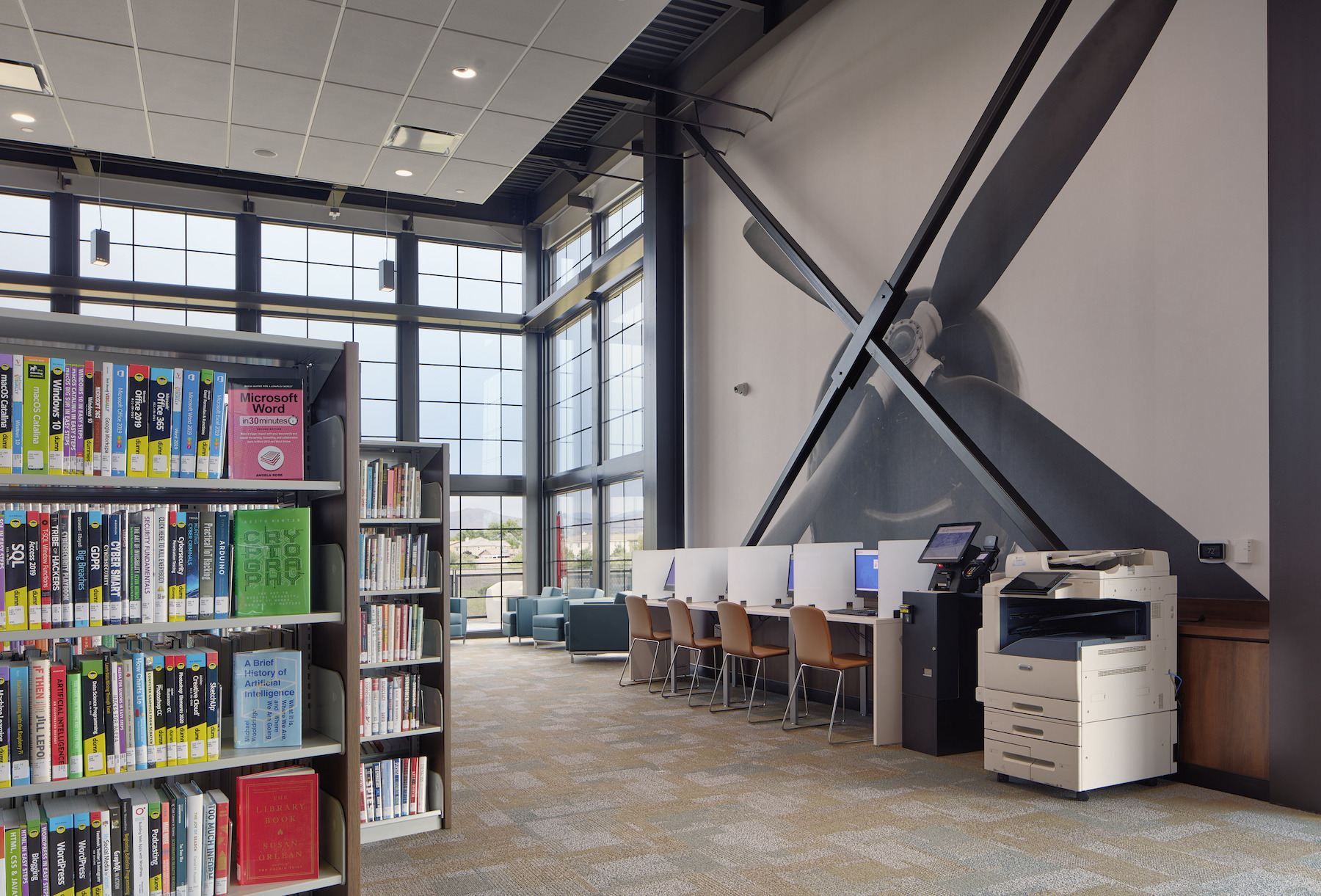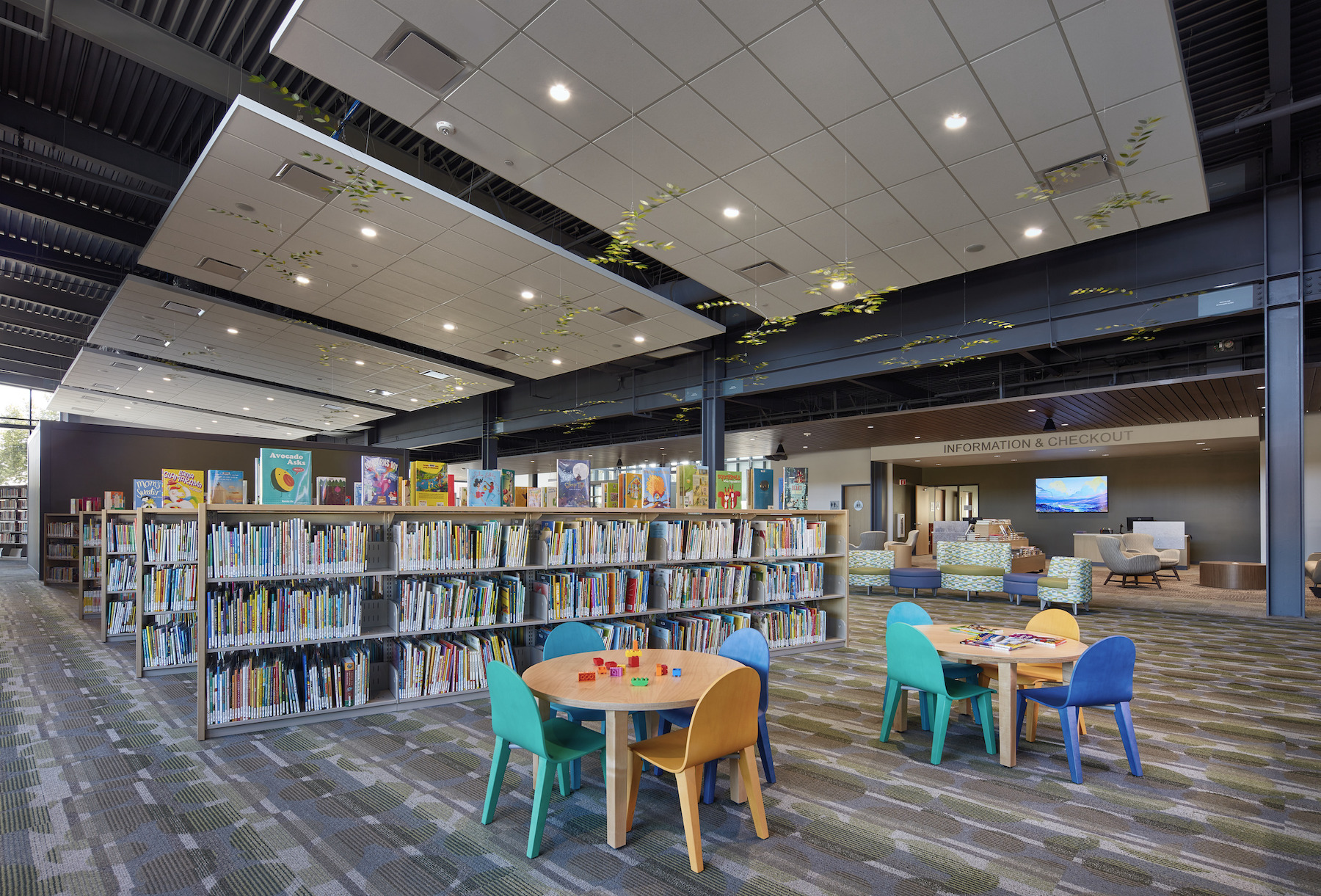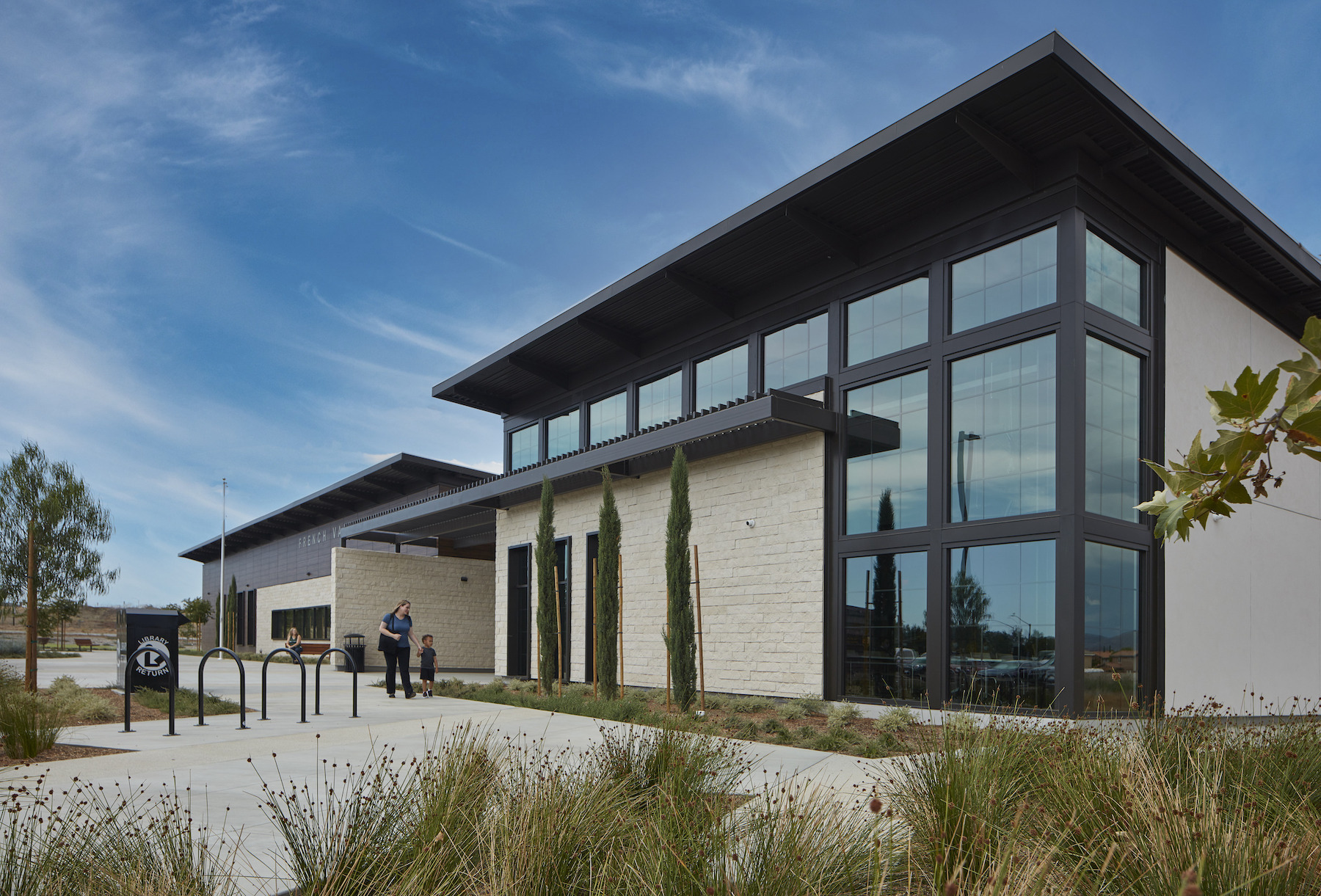Over the summer, a building team that included CannonDesign and McCarthy Building Companies completed three new libraries in Riverside County, Calif., that were built simultaneously in just 20 months under a $46 million public-private partnership contract that included a nonprofit specializing in funding P3 projects.
The three libraries—in Desert Hot Springs, Menifee, and French Valley—are now owned by Community Facility Public Private Partnerships (CFP3), a 501(c)(3) nonprofit that financed this project via tax-exempt bonds. Over the course of CFP3’s ownership contract, which can run up to 30 years, the County expects to save $25 million in debt service, operations, and maintenance costs. The installation of solar panels alone is expected to save $600,000.
As early as 2014, Riverside County—the fourth most-populous county in the state and the 10th most-populous in the U.S.—realized that its library system wasn’t keeping up with its growth. For example, at the time its existing 10,500-sf library in Menifee was serving 350,000 patrons. And that library’s location near a major roadway excluded expansion, according to a white paper about this project that CFP3 has published.
Back in the 1970s, the County’s Board of Supervisors approved the dedication of 1% of its general property tax for library services. But that wasn’t enough to build and maintain newer, larger branches.
P3 PRECEDENTS

Prior to its library contract, the County had done about 15 P3s for different building types that covered 1 million sf and $600 million of property. To envision how many new libraries it needed, the County’s Office of Economic Development, in partnership with Library Systems and Services (which since the 1990s had operated Riverside’s library system), hired Group 4, a South San Francisco firm that specializes in project planning for libraries and community centers.
In 2018, the Riverside County Library System created an RFP for three new libraries, and received a dozen proposals. The County, which approved this project a year later, determined that the best, and least expensive, course of action would be to hire one team for all three projects under a P3 contract structure.
There were several advantages to taking this route, not the least being that the project could move forward without as many public hearings, procurement protocols, and referendums that can add months to scheduling. And because CFP3 is a nonprofit, it would not be saddled with property taxes as the libraries’ owner. The interest it charged the County for the cost of the project, at between 3% and 3.5%, was less than half of the return on equity a private P3 entity would have expected.
WHAT PARTNERS BROUGHT TO THE TABLE


The partners in this P3 included Omni West Group, a development and property management firm, that came up with the libraries’ operational budget. CannonDesign created the blueprints for all three libraries that, while having different layouts, share similar attributes like children’s areas, tech centers, and community spaces.
McCarthy, which served as this project’s general contractor, was brought on board in part for its long-time relationships with local subcontractors, which prevented manpower-shortage delays. McCarthy assigned one project manager to monitor all three builds. CFP3 calculates that the design and construction of the libraries accounted for 20% of the total cost, with the rest going toward maintenance and operations.
During construction, there were some community concerns about the 25,000-sf library in French Valley, which opened July 31 and is the only one of the three located in a residential neighborhood. CFP3 states that these concerns were resolved with meetings and virtual fly-throughs of the building.
The new Menifee library opened July 24 at 20,000 sf, and was built to be an anchor for a larger retail development. The Desert Hot Springs library—the first of the three to open, on June 26—is 15,500 sf, and replaces a library that was only around one-fifth that size. “This library is a wonderful anchor for the community,” says Matthew Greiner, AIA, NCARB, Senior Vice President at CannonDesign. “It’s a home base for the wonderful people who live here. It’s where so many bright ideas and futures will be launched.”
Related Stories
| Oct 9, 2014
Regulations, demand will accelerate revenue from zero energy buildings, according to study
A new study by Navigant Research projects that public- and private-sector efforts to lower the carbon footprint of new and renovated commercial and residential structures will boost the annual revenue generated by commercial and residential zero energy buildings over the next 20 years by 122.5%, to $1.4 trillion.
| Sep 29, 2014
Snøhetta releases final plan for terraced central library in Calgary
The competition-winning New Central Library is now in the final design stages, after two years of community engagement on the part of design firms Snøhetta and DIALOG.
| Sep 24, 2014
Architecture billings see continued strength, led by institutional sector
On the heels of recording its strongest pace of growth since 2007, there continues to be an increasing level of demand for design services signaled in the latest Architecture Billings Index.
| Sep 22, 2014
4 keys to effective post-occupancy evaluations
Perkins+Will's Janice Barnes covers the four steps that designers should take to create POEs that provide design direction and measure design effectiveness.
| Sep 22, 2014
Sound selections: 12 great choices for ceilings and acoustical walls
From metal mesh panels to concealed-suspension ceilings, here's our roundup of the latest acoustical ceiling and wall products.
| Sep 9, 2014
Using Facebook to transform workplace design
As part of our ongoing studies of how building design influences human behavior in today’s social media-driven world, HOK’s workplace strategists had an idea: Leverage the power of social media to collect data about how people feel about their workplaces and the type of spaces they need to succeed.
| Sep 7, 2014
Behind the scenes of integrated project delivery — successful tools and applications
The underlying variables and tools used to manage collaboration between teams is ultimately the driving for success with IPD, writes CBRE Healthcare's Megan Donham.
| Sep 3, 2014
New designation launched to streamline LEED review process
The LEED Proven Provider designation is designed to minimize the need for additional work during the project review process.
| Sep 2, 2014
Ranked: Top green building sector AEC firms [2014 Giants 300 Report]
AECOM, Gensler, and Turner top BD+C's rankings of the nation's largest green design and construction firms.
| Aug 25, 2014
Ranked: Top cultural facility sector AEC firms [2014 Giants 300 Report]
Arup, Gensler, and Turner head BD+C's rankings of design and construction firms with the most revenue from cultural facility projects, as reported in the 2014 Giants 300 Report.
















